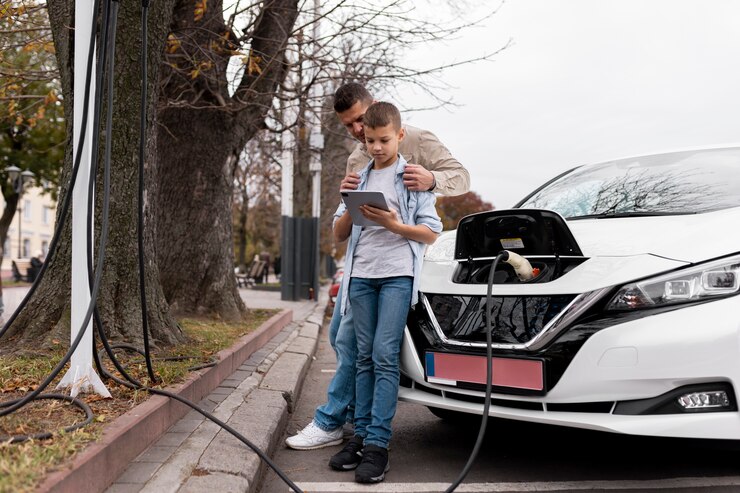When it comes to the field of automobile innovation, Tesla is a shining example of technological progress and environmentally sensitive design. However, with great invention comes great responsibility, and for Tesla owners, navigating the world of insurance may be just as difficult as interpreting the most recent software updates released by the firm. Over the course of this all-encompassing guide, we will discuss all you need to know about insuring your Tesla, from the particulars of coverage to the factors that should be considered about cost, all while including real-world examples to shed light on the most important topics.
Understanding the Unique Position of Tesla
Before diving into the mechanics of insurance, it is essential to have a solid understanding of the reasons why insuring a Tesla is different from insuring regular automobiles. The revolutionary electric powertrain systems and superior Autopilot capabilities that Tesla has developed not only set them distinct from their competitors but also offer new insurance considerations that are not found in other vehicles. For instance, the expenses of repairing and replacing Tesla’s cutting-edge components, such as its lithium-ion batteries or autonomous driving sensors, can have a major impact on the premiums that are paid for insurance.
When purchasing insurance for your Tesla, it is vital to have a solid understanding of the basic types of coverage that are offered, which are as follows:
1. “Liability Insurance” protects you against property damage and physical injury in the event that you are found to be at fault in an accident.
In the event that your Tesla is damaged in a collision, the collision coverage will pay for the repairs that need to be done.
2. “Comprehensive Coverage” protects against accidents that are not vehicles colliding with one another, such as theft, vandalism, or natural disasters.
3. “Uninsured/Underinsured Motorist Coverage” allows you to be compensated in the event that you are involved in a collision with a motorist who does not have adequate insurance coverage.
Coverage tailored to Tesla:
In addition to the normal coverage options, Tesla owners have the option of purchasing extra protections that are specifically suited to the characteristics of their vehicle:
1. Enhanced Auto Pilot (EAP) Coverage: In light of Tesla’s sophisticated driver-assistance features, prospective owners might be interested in purchasing specialist coverage for occurrences that are associated with EAP.
2. Coverage for the Battery and Drive Unit: The battery and drive unit are the most important components of Tesla’s electric powertrain, so it is essential that those components receive complete protection.
3. Rental Reimbursement: In the event that your vehicle requires repairs, using rental reimbursement will ensure that you are not left stranded without any means of transportation.
Concerns Regarding the Cost:
It is common for the allure of owning a Tesla to come with a premium price tag; however, how does this translate to the price of insurance? A number of factors, such as the following, affect Tesla insurance premiums:
1. Vehicle Model: The particular Tesla model that you possess can have a big impact on the insurance costs that you experience. For instance, the cost of insurance for a high-performance Model S Plaid is expected to be more than the cost of insurance for a normal Model 3.
2. Your driving record should be taken into consideration when setting your insurance prices because it is a significant factor. Drivers who are responsible and have no criminal history typically have cheaper insurance premiums.
3. Location: The place in which you reside is important. There is a possibility that premiums will be higher in urban regions that have greater rates of stolen vehicles and traffic congestion.
4. Coverage Limits and Deductibles: Modifying your coverage limits and deductibles might have an impact on the premiums you pay. In most cases, choosing a higher deductible will result in reduced monthly payments; but, it will also result in increased out-of-pocket spending in the event that you file a claim.
Example from the Real World:
To better explain these principles, let’s look at some examples from the actual world:
1. “The Case of the Model 3 Owner”: Sarah, who owns a Model 3 and has a spotless driving record, resides in a suburban neighborhood that has a relatively low rate of criminal activity. With the goal of keeping her monthly rates within her financial means, she chooses to get comprehensive coverage with moderate limits and a higher deductible.
2. “Navigating Urban Terrain”: Jamal lives in a crowded city and utilizes a Model Y as his mode of transportation. In urban regions, where there is a greater likelihood of accidents and theft, his insurance costs are significantly higher than in rural areas. In spite of this, he places a high priority on having complete coverage in order to safeguard his vehicle against any potential urban threats.
3. “Performance Comes at a Price”: Chris went all out and purchased a brand-new Model S Plaid, which has performance that is unmatched by everything else. However, he is taken aback by the fact that the whole cost of insurance for such a high-performance vehicle is significantly higher. He chooses to increase his deductible and lower his coverage limits in order to reduce the amount of money he spends.
When you insure a Tesla, you are not only ensuring that you have basic coverage, but you are also protecting a marvel of contemporary engineering. Owners may confidently traverse the insurance landscape if they have a thorough awareness of the distinctive characteristics of Tesla vehicles, choose coverage options that are appropriate, and take into consideration cost-cutting strategies. Protecting your Tesla is not just a need; it is also a demonstration of creativity and foresight in the face of unpredictability. This is true whether you are driving a Model 3 or unleashing the power of a Model S Plaid.

